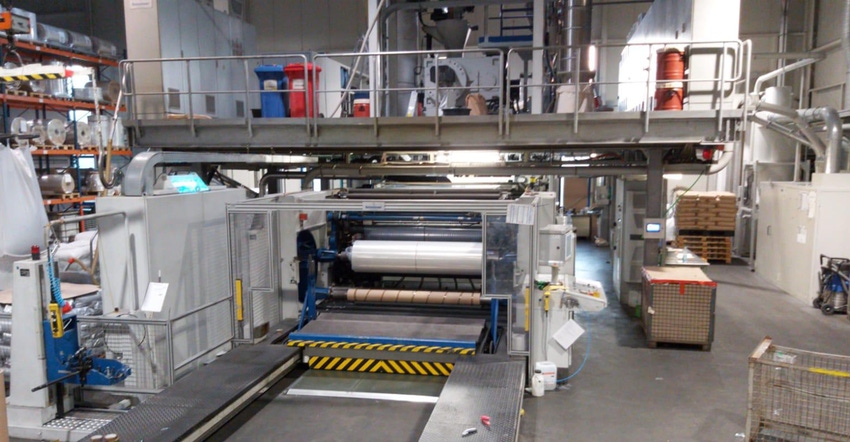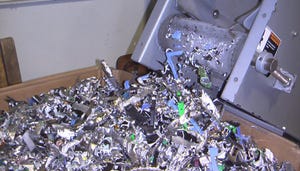Israeli-based Compostable Packaging Producer TIPA Expands its Reach
Compostable packaging materials have existed for years but not all of them perform as well as conventional plastic products. Companies are working on upstream design to improve functionality, but there are bigger downstream challenges: designing compostable packaging for efficient end-of-life management; there are special considerations, especially with food packaging that requires protective multilayers.

Compostable packaging materials have existed for years but not all of them perform as well as conventional plastic products. Companies are working on upstream design to improve functionality, but there are bigger downstream challenges: designing compostable packaging for efficient end-of-life management; there are special considerations, especially with food packaging that requires protective multilayers.
TIPA, headquartered in Israel, with operations in Europe and more recently the U.S., has created a blend of polymers, certified as compostable, that it says meets performance requirements for multiple packaging applications, specifically compostable films and laminates that serve the fashion, fresh produce, and dry foods and snacks markets.
The material breaks down in compost settings as required by certification standards in North America (ASTM D6400); Europe (EN 13432); and Australia (AS 5810-2010 and AS 4736-2006). It sells roll stock to converters and sells finished applications to brands and companies.
“We created formulations that are blends of biobased and fossil-based polymers designed to provide a mix of functionalities and properties (appearance, printability, durability, etc.) to uphold customer expectations,” says Michael Waas, vice president TIPA, North America.
Currently the products contain 20 to 80% biobased material, depending on the application, though TIPA is hoping to increase biobased content over fossil based.
“We focus on key qualities: achieving the same performance that converters and brands expect from conventional plastic packaging, such as sealability, run rate, and strength of material,” Waas says.
The output works with existing infrastructure along the supply chain. So converters can run the material on their equipment in a way that Waas says is cost and time effective, and manufacturers can swap out packaging solutions without changing their supply chain.
TIPA co-founder and CEO Daphna Nissenbaum spent five years working with industry experts to develop packaging that would cut plastic use, inspired by the plastic litter she’d see scattered on the ground during her routine jogs.
She launched TIPA in 2011, expanded to Europe about six years later, and in late 2020 TIPA moved into the U.S. Leadership recognized the States as one of the largest film users, and was as aware of growing clamor around plastic pollution it created. Some of the first U.S. customers are Fresh Harvest, SUNRAYS (a brand of fresh fruit importer Jac. Vandenberg), coffee and tea brand InstaBrew, produce grower and distributor Chelan Beauty; packaging manufacturer and distributor Atlapac; and Clearview Packaging.
TIPA’s pitch, especially to the food and beverage industry, is that compostable packaging provides a sustainable solution to hard-to-recycle multilayered films, currently recycled in single-digit percentages. Materials recovery facilities (MRFs) are challenged to separate the layers as it’s expensive and time consuming and often not possible.
At least as big a consideration Wass points out is that when food-saturated packaging is landfilled it creates greenhouse gases. But to compost facility operators the food residue that poses a headache for landfills and MRFs is a plus, feeding valuable nutrients into the products they create.
SUNRAYS has replaced a little over 250,000 bags with TIPA’s compostable packaging so far in 2022 and plans to expand “significantly” next year, according John Paap, Brand & Marketing manager, SUNRAYS.
The product is more expensive than traditional plastic packaging, but the company expected that.
“Newer technology is always going to be more expensive. Just look at flat screen TVs when they came out and what they are priced at today. We are confident that the cost for this packaging will come down as demand increases for this kind of material,” he says.
SUNRAYS is prioritizing compostable over recyclable packaging because management figures recycling is not going to fix the waste problem.
“The regenerative loop is broken – meaning that we as humans are taking from the earth and not returning anything (i.e., creating waste). Compostable packaging helps us to restore that regenerative loop … for us, it’s all about respecting the earth, and by restoring the regenerative loop with compostable packaging we are acting on that respect,” Paap says.
Flexible films have a wide range of applications, and with that variance come different performance requirements.
“Fashion packaging often does not have the same performance requirements from a barrier perspective as a food application. It simply requires a polybag [one layer of film] designed to serve as outer packaging.
On the other end of the spectrum foods such as coffee, nuts, or chips require significant barrier protection, for instance from moisture and oxygen, to stay fresh,” Waas says.
Among TIPA’s most immediate focuses is work to scale in the U.S. Management has a plan based on what it’s learned of the market.
“By focusing on production, partnerships, and sales, we have learned that the U.S. market and infrastructure require more home compostable products. Thus, our main goal for the coming years is to shift towards more products that can be composted at home while expanding our local sales team to grow our customer base in the food and fashion industries.”
Waas says he is seeing more access to compost facilities, home compost systems and municipalities launching curbside programs. And there has been somewhat of an uptick in pick up services provided by private compost operators as well as in community compost centers.
Still, he admits, the growth that’s taken place to date is not enough to make a huge dent in packaging waste and its associated consequences.
The challenge is not with composting technology; it’s with inadequate collections and processing resources.
There’s been a push for policy that could possibly help build infrastructure, with California leading the way in the U.S.; SB 1383 sets robust requirements for organic waste diversion and management. Initial studies indicate meeting the law’s 75% diversion requirement by 2025 will call for about 100 new processing facilities, whether compost or other.
And at the federal level the Recycling and Composting Accountability Act (passed in the Senate in July 2022 and awaiting House review) tasks the U.S. Environmental Protection Agency with studying and planning national composting strategy as part of recycling infrastructure.
“So, I think we are at the beginning of a sea change when it comes to access to infrastructure for composting,” Waas says.
About the Author(s)
You May Also Like




